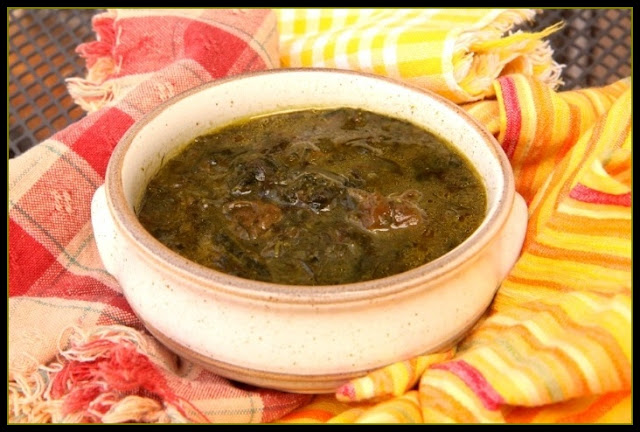Wild Things in March - Spruce/Fir/Pine Tips
In many countries, traditional foods are prepared for their medicinal effects. In most of these places, the foods prepared were wild foods, that were cheap and easy to come by. By default, they were local and seasonal. One of the problems that we see with a lot of modern ‘fad’ diets is that in order to actually follow the diet, one needs to fork out a whole lot of money. Most of us just can’t afford to do that, especially not in this economy! Not only that, but it seems mighty suspicious that, in many cases, these products that are toted as panaceas have to come from half way around the world-- noni from Tahiti; acai from Brazil; goji from China. We highly doubt that God (or a higher being of your choice) put all of the good stuff in Tahiti, and left us to fend for ourselves until the advent of globalisation. Whether food or medicine, the majority of what we need can be found locally. It might not be trendy, but it will most probably be just as, if not more effective. Wherever you are, you have within your reach an untapped resource: wild foods.
Welcome to the Wild Things Round Up*
We are Butter from Hunger and Thirst and Bek from Cauldrons and Crockpots, and we are here to show you that eating wild foods doesn't need to be a terrifying endeavour, and that our health and our diet need not be dictated by financial status or geographic location.
A few things about us and this Round Up:
1. Wherever you are, you have access to Wild Things, even if it means clandestine trips to your neighbour's yard in the middle of the night**.
2. Foraging is not only for hippies and luddites, though hippies and luddites are both very much welcome (Hi Hippie, Hi Luddite!!). It's easy to assume that everyone who eats this way lives out in the wild, and shuns the material world and/ or technology. But it's not true. This is not a club exclusive to country mice. Bek lives in the middle of a city, and Butter lives in the middle of suburbia. We're both very well adjusted modern women, who love our lives, and happen to love nature as well.
3. We are not trying to be cave people. Though there are plenty of people in the world who successfully and gracefully live a life that is more similar to how people lived hundreds, or even thousands of years ago, neither of us are that person, and we assume that for the most part, you are not either. It's easy to romanticise, but that is a difficult, hard working life. It's also not NECESSARY to remove oneself from the modern world in order to be connected to nature. And, when it comes down to it, is that not really what we all want a bit more of-- connection. To nature, to community, to other people, to a higher power. It's easy to say "well, if I lived in the woods then I'd be connected to nature, but I live in Los Angeles so I can't be." But that simply isn't true. Nature is everywhere. Life is everywhere. It's not outside of your touch, it's not only available to people who make the sacrifice of modern convenience. You do not need to give up your make-up or your latte.
A few foraging rules:
1. DO NOT EAT ANYTHING THAT YOU CANNOT 100% IDENTIFY. We cannot stress the importance of this point. People die of stupidity every day. Let's not win any Darwin awards here.
2. Learn and pay attention to your local laws about where picking is legal.
3. Respect private property. Ask permission. Most people will gladly let you pull up some weeds for them. Most people are delighted to get rid of some of the fruit that rots all over the pavement. Just ask.
4. Don't take more than you need. Never take rare plants. Learn what's in your area-- only take things that are abundant. This is important. Always think of the future, not just in terms of what you want, but in terms of the ecology of the system that you are taking from. These eco systems have been around for millenia, since long before people got there; don't be the one to change that in one generation.
Tools you will need:
1. Scissors
2. Pocket knife
3. A local guide book-- with pictures
4. Bags to collect your food into
How to play:
Every month, at the beginning of the month, we will write about a new Wild Thing. We will give pictures, descriptions, best locations, tastes, and a breakdown of its medicinal uses. We will also list any possible toxicity issues. The plants we pick will be those with few if any toxic lookalikes, and if there are, we will give ample warnings. None of the plants we pick will have any potentially lethal lookalikes. Then, over the next month, we, and YOU, will go and find it, and play with it, and come up with a way to use it. Before the deadline, you can email us a link to your recipe, or if you don't have a blog, submit your recipe by email, and then at the end of the month we will provide a list of everyone's adventures. Sounds fun? We sure think so!
*No association with Monsanto.
**Just kidding. We don't advocate stealing. Really, there's no need-- a knock on the door and a "Hey, I noticed that you have an apple tree full of rotting apples. I was wondering, could I take some of them, or pay you for some of them, or mow your lawn for some of them?" Most people are horrified at the thought of taking money for apples, and will drop big bags of them off on your front step for months to come. Spruce/Fir/Pine Tips
With so many people still experiencing cold weather through the month of March, we chose the tips of the evergreen trees - spruce, fir, and pine - as our featured herb of the month. To learn more about the medicinal properties of these plants, hop on over to Bek's blog.
The tender young growth that emerges from the tips of the branches in the spring is ideal for making foods and medicine. These young needles may even be enjoyed raw, in a salad. When the new growth of these soft green tips emerge in the spring, they can be spotted from a mile away because of their vibrant green color. But keep in mind that the older needles can also be utilized, but for recipes, these need to be chopped if consumed.
Surprisingly, these coniferous needles don't just taste like xmas trees smell; they can also have complex citrus top notes - from orange to pomelo to grapefruit - and the taste varies widely from tree to tree. We are so excited to be using spruce/fir/pine as our featured ingredient. If you simply think of them as being pine-y, you are selling them short. They are zingy and refreshing and full of punch!
As always with foraging, don't feel like you are obligated to walk barefoot in a majestic forest in order to collect good food (although this is quite fun!). You can obtain great forage in your backyard or the city, just be mindful of spraying and pollution.
How to Identify Spruce
The needles of the spruce tree emerge from the branch singly in spirals, are four-sided (they have a diamond shape in cross-section), and can easily be rolled between your fingers.
How to Identify Fir
The needles of the fir tree emerge from the branch singly, often by what appears to be a tiny suction cup. Fir needles are flat, and cannot be easily rolled between your fingers. It helps me to remember that fir are flat.
How to Identify Pine
The needles of pine trees emerge from the branch in bundles of either 2,3, or 5, not singly.
So, now that you know how to identify spruce, fir, and pine, are you ready to make some inspired dishes from your forage? I know I could go in about sixty different directions with this exciting ingredient, and can't wait to see what you all come up with. Let's get wild this month!
Spruce Gremolata
I have blue spruce trees in both my front and back yards. The trees are enormous, and just love the climate here. So, it's a natural for me to use spruce for the Wild Things Round Up this month.
I was really inspired by the citrus notes I could tastes in spruce, and decided to make a play on gremolata to create a bold sauce that always makes an amazing marinade. I served spruce gremolata over grilled deer steaks, but can imagine it being delicious accompaniment to any number of meats, and even mushrooms and vegetables. The flavor of spruce gremolata may be too strong for some as a sauce, but don't miss it's magic as a marinade.
To make spruce gremolata, start by removing spruce needles from a branch. I found that this was easiest to do with a pair of scissors. Next, strip the zest off of an orange. Place the spruce needles and orange zest into a mortar and pestle along with a few scratches of garlic to taste (I can't take huge doses of raw garlic), and grind into a paste. Alternately, finely chop the combo with a good knife. Add some olive oil to loosen the mixture.
To use as a marinade, spoon generously over meat, and massage it in. Leave to marinade from 1-24 hours. Before cooking, scrape excess marinade from meat, and generously season with salt and pepper.
And if you enjoy strong flavors, finish your meat with a spoonful of raw spruce gremolata.
****Wild Things is a round up recipe challenge. At the end of March, we'd love for you to share what you've been cooking with spruce/fir/pine tips. If you'd like to participate, please contact us at wildthings.roundup@gmail.com *****
I'm sharing this recipe and the Wild Things Round Up with the Hearth and Soul hop.








